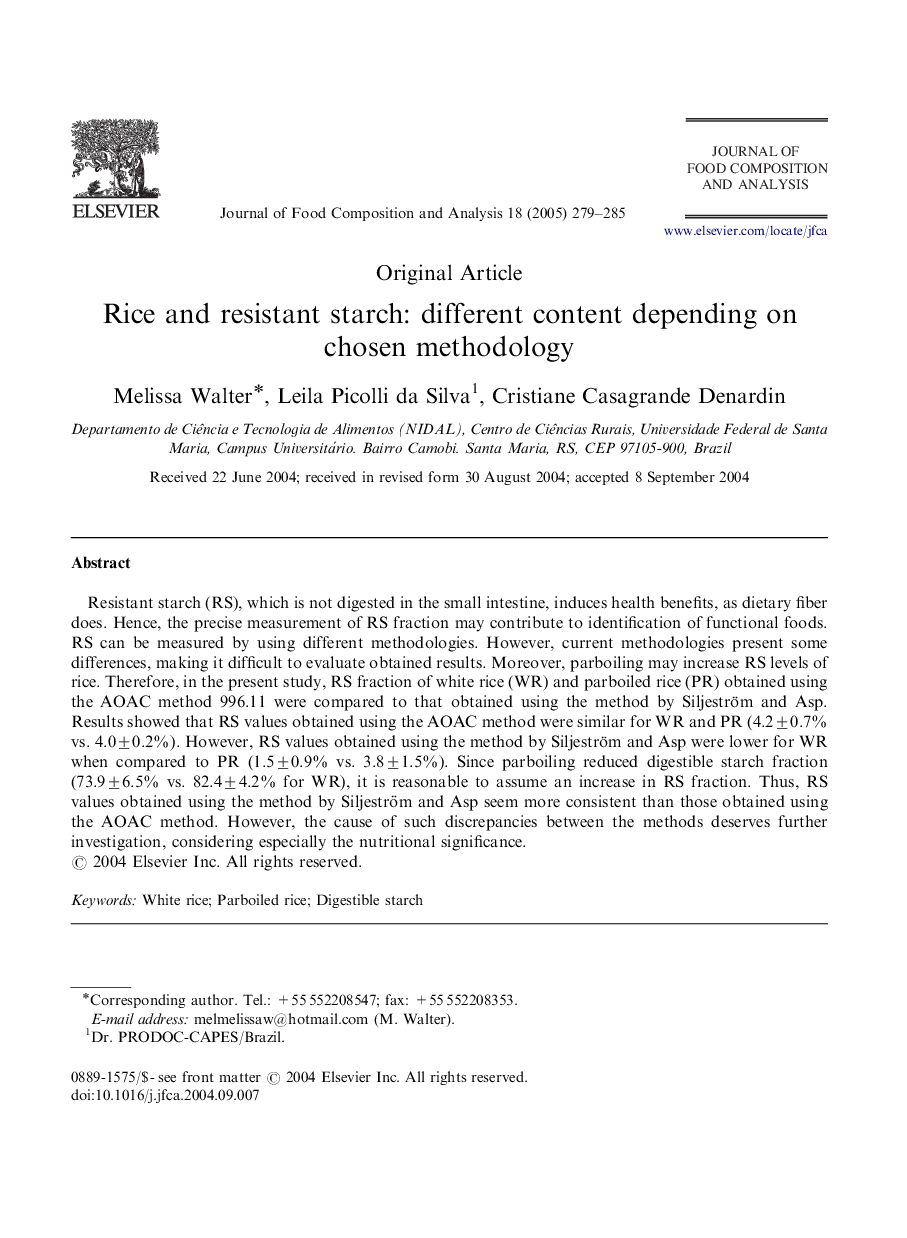| Article ID | Journal | Published Year | Pages | File Type |
|---|---|---|---|---|
| 10553027 | Journal of Food Composition and Analysis | 2005 | 7 Pages |
Abstract
Resistant starch (RS), which is not digested in the small intestine, induces health benefits, as dietary fiber does. Hence, the precise measurement of RS fraction may contribute to identification of functional foods. RS can be measured by using different methodologies. However, current methodologies present some differences, making it difficult to evaluate obtained results. Moreover, parboiling may increase RS levels of rice. Therefore, in the present study, RS fraction of white rice (WR) and parboiled rice (PR) obtained using the AOAC method 996.11 were compared to that obtained using the method by Siljeström and Asp. Results showed that RS values obtained using the AOAC method were similar for WR and PR (4.2±0.7% vs. 4.0±0.2%). However, RS values obtained using the method by Siljeström and Asp were lower for WR when compared to PR (1.5±0.9% vs. 3.8±1.5%). Since parboiling reduced digestible starch fraction (73.9±6.5% vs. 82.4±4.2% for WR), it is reasonable to assume an increase in RS fraction. Thus, RS values obtained using the method by Siljeström and Asp seem more consistent than those obtained using the AOAC method. However, the cause of such discrepancies between the methods deserves further investigation, considering especially the nutritional significance.
Keywords
Related Topics
Physical Sciences and Engineering
Chemistry
Analytical Chemistry
Authors
Melissa Walter, Leila Picolli da Silva, Cristiane Casagrande Denardin,
